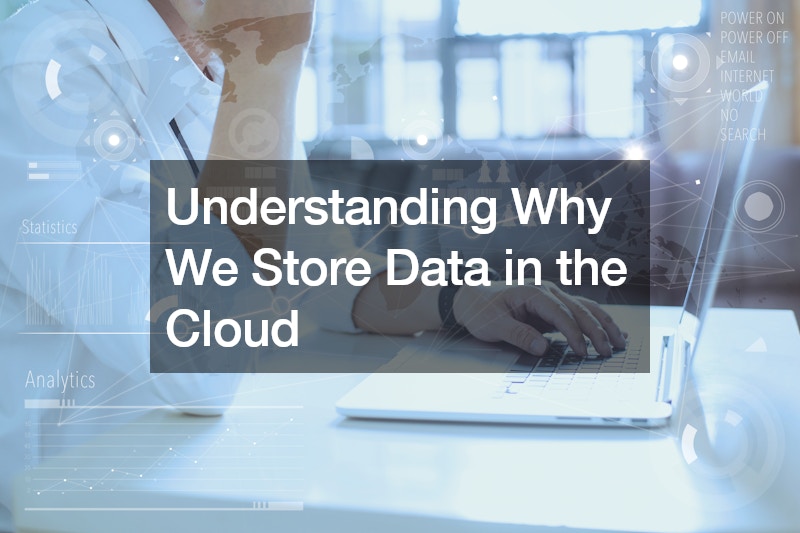Disclaimer: Website Designs NJ. This site provides computers and technology content for informational purposes only.
Understanding Cloud Storage Basics
Understanding cloud storage basics is essential for grasping the foundation of modern computing infrastructure. Cloud storage refers to the storage of data on remote servers accessed through the internet, replacing traditional local storage solutions. Two primary distinctions in cloud storage are ephemeral and persistent storage.
Ephemeral storage is temporary, existing only as long as a virtual server is active, while persistent storage persists even when the server is not attached. Persistent storage comes in various forms, including block, file, and object storage, each serving different purposes.
Billing for cloud storage typically considers usage and performance requirements, with costs varying based on factors like data volume and performance needs. Consumer cloud storage solutions like iCloud, OneDrive, and Google Drive utilize object storage on the backend, providing users with easy access to files and photos across devices. Understanding these basics is crucial for navigating the complexities of cloud storage in both enterprise and consumer contexts.
Ephemeral vs. Persistent Storage
Ephemeral and persistent storage are two fundamental concepts in cloud computing, each serving distinct purposes. Ephemeral storage, also known as temporary storage, exists only for the duration of a virtual server’s active session. When the server is terminated or experiences a failure, all data stored in ephemeral storage is lost. This type of storage is typically used for temporary data, such as cache or scratch space, where data persistence is not critical.
On the other hand, persistent storage remains intact even after the associated virtual server is shut down. It can store data permanently, allowing users to access it across multiple sessions and instances. Persistent storage comes in various forms, including block, file, and object storage, catering to different use cases and performance requirements.
Unlike ephemeral storage, data stored persistently is retained even during server failures or terminations, providing reliability and durability essential for long-term data storage needs. Understanding the differences between ephemeral and persistent storage is crucial for designing resilient and scalable cloud-based applications.
Block, File, and Object Storage
Block, file, and object storage are three primary types of persistent storage used in cloud computing, each designed for specific data storage and retrieval requirements.
Block storage can divide and store data in fixed-sized blocks, which are managed by a storage controller and accessed by applications as virtual block devices. It is suitable for storing structured data and running databases or virtual machines that require direct access to disk blocks.
File storage organizes data into hierarchical structures, resembling traditional file systems, with directories, files, and folders. It allows multiple users to access and share files simultaneously, making it ideal for collaboration and file-sharing applications.
Object storage will store data as objects within a flat address space, each identified by a unique identifier. It offers scalability and flexibility, making it suitable for storing unstructured data like images, videos, and documents. Object storage is often accessed via APIs, enabling seamless integration with cloud-based applications and services. Understanding the characteristics and use cases of block, file, and object storage is essential for designing efficient and scalable cloud storage solutions.
Billing and Performance Considerations
Billing and performance considerations are crucial aspects of cloud storage implementation. Cloud storage services typically charge based on two main factors: usage and performance requirements.
Usage charges are based on the amount of storage consumed over time, typically measured in gigabytes per month. This includes charges for storing data and accessing it, as well as any additional features or services utilized.
Performance charges are based on the level of performance required for data access, measured in terms of input/output operations per second (IOPS) or bandwidth. Higher performance requirements result in higher costs, as more resources are allocated to meet these demands.
Balancing performance needs with cost considerations is essential when designing cloud storage solutions. Understanding the performance requirements of applications and workloads, as well as optimizing storage configurations, can help minimize costs while ensuring adequate performance levels. Additionally, leveraging features like tiered storage and data lifecycle management can further optimize costs by automatically moving data between different storage tiers based on access patterns and usage requirements.
Consumer Cloud Storage Solutions
Consumer cloud storage solutions, such as iCloud, OneDrive, Dropbox, and Google Drive, offer users convenient platforms to store data across multiple devices. These services typically provide web applications or mobile apps that allow users to upload, organize, and share files, photos, and documents.
Behind the scenes, consumer cloud storage solutions rely on object storage technology to store data. Object storage allows for scalable, cost-effective storage of large volumes of unstructured data, such as photos, videos, and documents. Users interact with these services through user-friendly interfaces that mask the underlying complexity of object storage.
Consumer cloud storage solutions often offer free or tiered pricing plans based on storage capacity, with additional features available for premium subscribers. While these services prioritize ease of use and accessibility, they also maintain data security and privacy measures to protect user data from unauthorized access or breaches.
.

